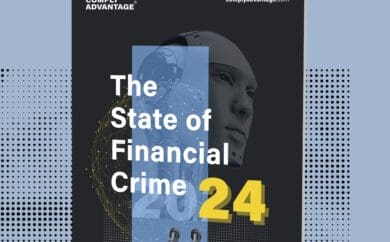 Featured
Featured
Social media has become one of the most powerful drivers for terrorist funding, and it’s set to stay that way. In part one of this blog on the impact of social media, we discuss the impact that social media platforms themselves are having on terrorist financing.
How Terrorists Use Social Media
A report published in 2014 found that 90% of internet-based terror activities are conducted using social media. That percentage has likely increased over the last six years, given the overall global growth in social media use.
As of late 2019, nearly half of the world’s population — 3.725 billion out of 7.734 billion — is active on social media. That amounts to over 83% of current internet users and an increase of nearly 10% from October of the previous year. What’s more, there are no signs that global social media usage is slowing as we move into 2020 and beyond.
Social media’s explosive growth has sparked serious concerns over its possible exploitation by terrorists, terrorist organizations and radicalized sympathizers looking to promote their ideas and fund attacks worldwide. Given the open nature of these platforms, their reach and the anonymity they provide, terrorist financing is often hidden in plain sight, with small-currency transactions the norm.
Recent terror attacks have also highlighted the role social media plays in radicalizing and recruiting individuals as well as showing the devastating results of their attacks. The Christchurch mosque attacks in March 2019 that killed 51 people were announced on 8chan, live-streamed on Facebook and then reposted repeatedly on various social media channels.
These attacks were “designed to go viral,” according to New Zealand’s prime minister, Jacinda Ardern. The attacks serve as propaganda material to garner support for additional attacks and create a campaign for the financing of terrorism.
Going viral requires a reach that’s instant and wide, something made possible by social media. This kind of reach also opens the door for sympathizers to donate to the cause little and often without disrupting their day-to-day finances. Further, terror financing methods vary widely. So while donations can be purposeful, they can also be made by unwitting pawns using videos and images that aren’t immediately linked to terrorism since calls for donations are often disguised as being for charitable causes.
Financiers then follow up those calls with instructions, communicated via encrypted platforms, on making payments. These often arrive in the terrorists’ hands by wire or, increasingly, social media platforms. Prepaid cards, virtual currencies and e-wallets are also encouraged as they fly under the radar of traditional AML/CFT controls — a shortcoming new legislation, such as the EU’s 5AMLD, is trying to address.
One Service Among Many
Government attempts to regulate speech on these platforms have been met with resistance and controversy, especially in the US, where free speech is a cherished, constitutionally protected right. Nor have they proven to be an effective deterrent. In addition, social media companies have been reluctant to toe that line themselves, with lackluster attempts to identify and regulate activity that could be seen as impinging on freedom of speech. But centering the debate around regulating the expression of ideas obscures other, possibly more effective ways to fight terrorism.
In many ways, social media companies have outgrown their original purpose. Sharing content is simply one service provided among many, with additional services aimed at facilitating money flow: Facebook introduced its own digital currency, Libra, for example, and Instagram launched an in-app checkout feature last year.
Yet creating an account on a social media platform is still relatively easy and requires little to no personal information. Moreover, when one account is shuttered, there’s nothing to prevent another from popping up, either on the same platform or on a different one.
In 2017, terror financier Hajjaj Fahd al-Ajmi called on his 1.7 million Instagram followers to donate funds to support terror activities. While Instagram shut down his account after being made aware of the plea, a slew of donations had likely already been made. What’s more, this occurred after al-Ajmi had been identified by the US and the UN as a terror financier, had conducted similar campaigns on Twitter and had populated his Instagram page with advertisements to support local businesses.
An Evolving Debate
So as social media companies evolve into online marketplaces and as in-app virtual currency use grows, it’s worth re-examining their role vis-à-vis the financial system. What responsibility do these companies have to screen their users or monitor transactions, when should those screening processes be performed, and to what extent should financial regulations apply to them?
These questions of liability may seem rather abstract, especially given the current regulatory landscape. But it’s undeniable that detecting terrorist financing requires a multi-pronged approach, and the complex relationship between social media companies, payment processors and other financial services companies will continue to evolve.
How regulators and global advisory bodies will decide to move forward in the future is something every social media platform and third-party payment processor should be aware of, especially as they continue to blur the lines between finance and social media.
Look out for our next blog on social media and terrorism financing where we’ll discuss the role that third-party payment processors have to play by signing up for our newsletter.
Originally published 16 January 2020, updated 17 November 2021
Disclaimer: This is for general information only. The information presented does not constitute legal advice. ComplyAdvantage accepts no responsibility for any information contained herein and disclaims and excludes any liability in respect of the contents or for action taken based on this information.
Copyright © 2024 IVXS UK Limited (trading as ComplyAdvantage).



 EN
EN